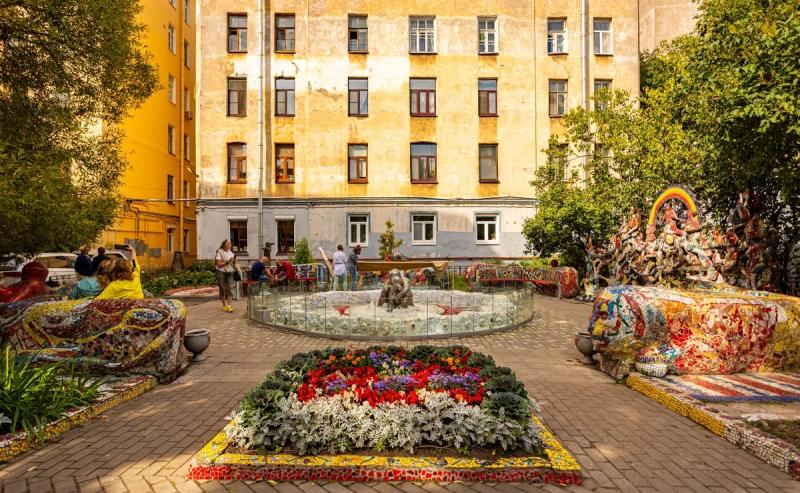
St. Petersburg is called an open-air museum. And for good reason: few cities in the world can boast of so many palaces and architectural masterpieces. But behind the front facades there is a whole scattering of places and objects that tourists know little about. We have compiled the TOP 10 hidden gems of the Northern Capital.
There are many attractions, routes, museums and iconic places in St. Petersburg that tourists want to see. One of the biggest challenges for them here is deciding where to go and what to see in a few days.
After all, only the historical center of St. Petersburg occupies several square kilometers, and you still need to have time to explore the magnificent royal residences in the suburbs. Therefore, most of the guests include only the main objects in their itinerary, not suspecting that places are waiting for them nearby that will open a new face of the Northern capital.
SEVEN BRIDGES AND FIVE CORNERS
For the St. Petersburg atmosphere, go to one of the historical districts of the city – Kolomna, sung by the classics. Here Dostoevsky settled Raskolnikov and the old woman, the interest-bearing woman, here the action of the comic poem “The House in Kolomna” by Pushkin takes place. Its quiet streets keep the memory of actors, actors, directors, composers, artists, writers.
In Kolomna there is Semimostye – a place at the intersection of two channels, Griboyedov and Kryukov, from which seven bridges can be seen at once: Krasnogvardeysky, Novo-Nikolsky, Staro-Nikolsky, Adjacent, Mogilevsky, Kashin and Trade.
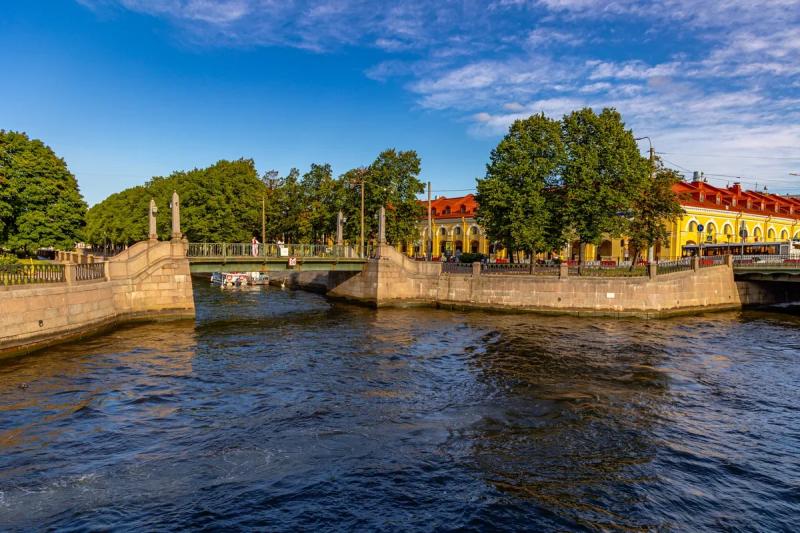
Semimostye, St. Petersburg. Photo Visit Petersburg
The cherished prospect of the “lucky seven” opens if you stand on the Pikalov Bridge so that St. Nicholas Cathedral is on your left hand. According to urban legend, after seeing all the bridges of Semimostye, you need to make a cherished wish, for example, to return to St. Petersburg again.
Five Corners is the unofficial name of another authentic St. Petersburg place. This is an intersection connecting Zagorodny Prospekt with three streets: Razezzhaya, Lomonosov and Rubinstein. There are really five corners here.
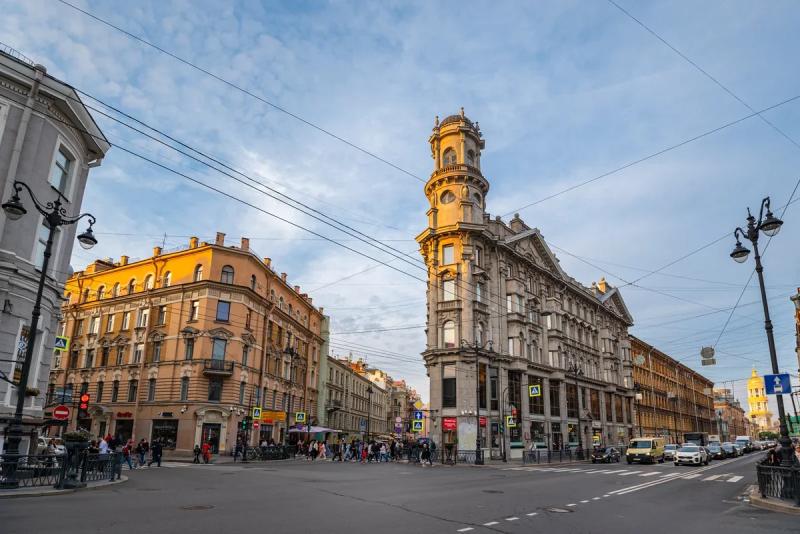
Five corners, St. Petersburg. Photo Visit Petersburg
One of the most beautiful buildings, the Ioff apartment building, has a triangular shape and faces Zagorodny Prospekt at an acute angle. Dostoevsky repeatedly called this place the “nerve node of St. Petersburg.” There is a special atmosphere here that will make you get lost in time and see the city from the other side.
BOOKSTORE, AKHMATOVA, BRODSKY AND A SPECIAL ATMOSPHERE
Instead of Nevsky, you can walk along Liteyny Avenue, where passageways-wells are hidden behind the facades of aristocratic mansions, apartment buildings, guards barracks.
The escape from the hustle and bustle of the city will be the quiet courtyard of the Sheremetyevo Palace, in the wing of which Akhmatova lived. There you can also see an exhibition dedicated to Brodsky.
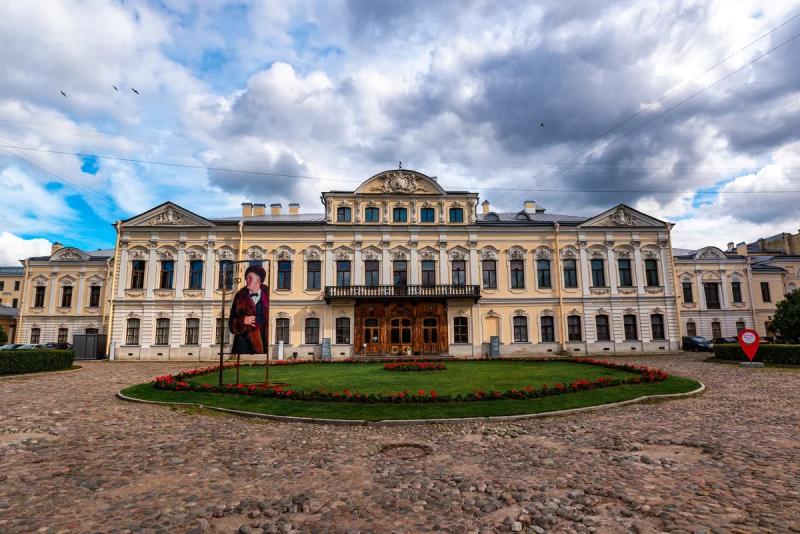
Sheremetyevo Palace, St. Petersburg. Photo: Visit Petersburg
There is another atmospheric place nearby – “Subscription Editions”, one of the oldest bookstores in St. Petersburg, where you always want to stay longer. Here you can have a cup of coffee, browse through a book you like, buy souvenirs or meditate at a large window overlooking the city.
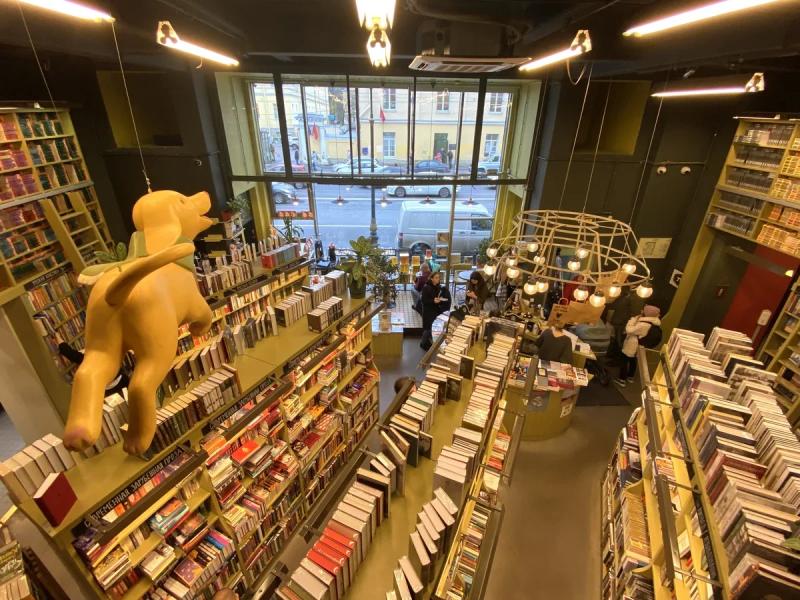
The famous Subscription Publications store in St. Petersburg. Photo: ATOR
There is a kindergarten at 46 Liteyny Prospekt Saint-Germain – a cozy space with an elegant fountain, flowers and a lattice that copies the fence of the Summer Garden. Chaliapin performed in it, Akhmatova and Brodsky read their poems, Tsoi sang.
In summer, there is a fountain, a lot of greenery, and benches for relaxing. “It seems that I have plunged into another story. Sitting by the fountain with a book is akin to feeling like a heroine of historical films!” one of the tourists wrote in a review about St. Petersburg Saint-Germain.
MOSAIC COURTYARD AND VITEBSK RAILWAY STATION
A walk through the Summer Garden and the Palace Embankment can be combined with a visit to Mosaic courtyard (Fontanka River embankment, 4). Here a playground, benches, foundations of houses and even curbs are decorated with colorful mosaics.
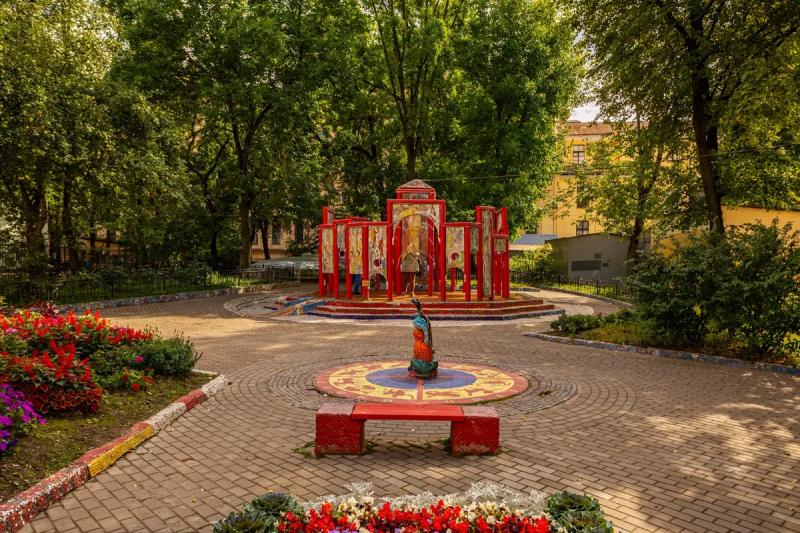
Mosaic courtyard in St. Petersburg. Photo Visit Petersburg
In summer there is a fountain, in winter there is a beautiful Christmas tree and garlands. This is the brightest and most colorful courtyard in the whole city, which has become the creative laboratory of the famous artist and founder of the Small Academy of Arts Vladimir Lubenko.
There are many places in St. Petersburg where you feel like a museum visitor. One of them is Vitebsk railway station, built at the beginning of the XX century.
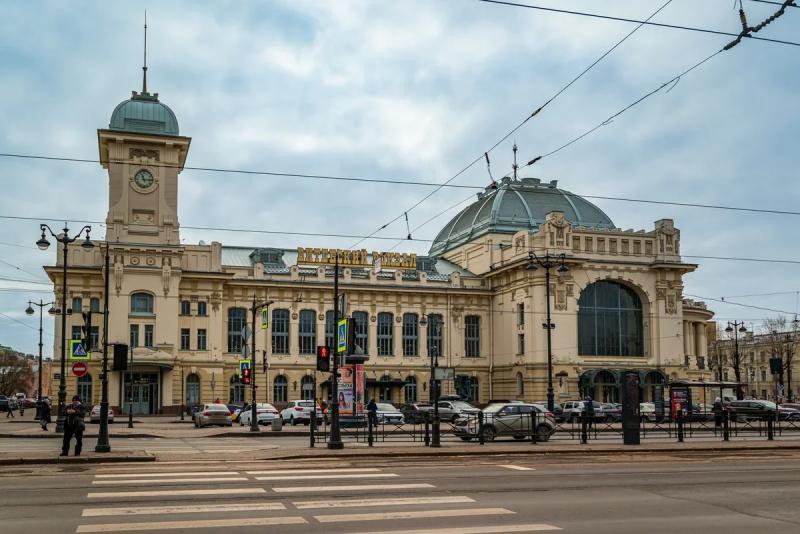
Vitebsk railway station in St. Petersburg. Photo: Visit Petersburg
It was, as they would say now, the most innovative transport facility in Russia: fully electrified, equipped with elevators for luggage and passengers, transporters and a railbed on the second floor.
In addition, the building had an unusual layout for that time, where large volumes are grouped asymmetrically, taking into account the functional purpose. There are almost no blank walls and ceilings, there is a lot of light and air inside due to the large number of windows and stained glass windows.
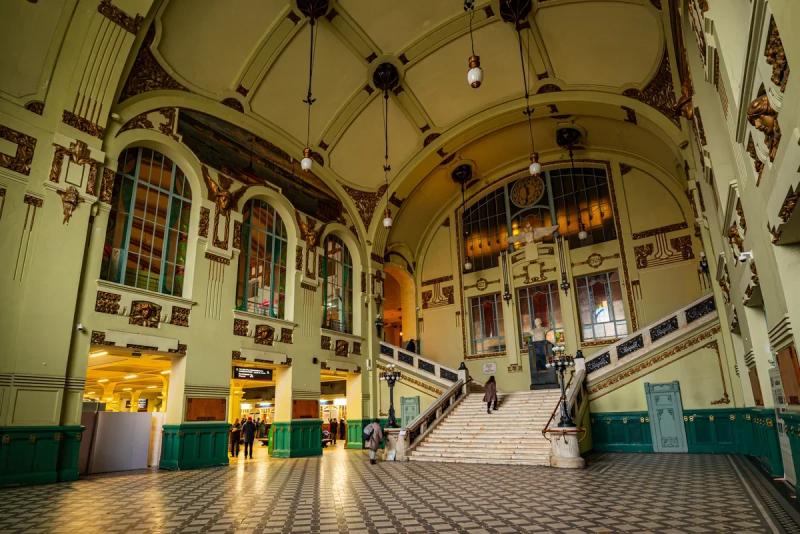
Vitebsk railway station in St. Petersburg, interior. Photo Visit Petersburg
THE NORTHERNMOST DATSAN AND THE MUSEUM OF THE ST. PETERSBURG AVANT-GARDE
St. Petersburg is one of the largest centers of world spiritual culture, a multi-confessional city. Here you can find Orthodox, Catholic and Lutheran churches, a synagogue, a mosque and a datsan – the oldest and northernmost Buddhist temple in Europe.
Datsan Gunzechoynei on Primorsky Avenue was opened in 1915. Even during construction, it received the nickname “amethyst temple” because of the red-purple granite facing.

Datsan Gunzechoyney on Primorsky Avenue in St. Petersburg. Photo: Visit Petersburg
During the Soviet years, a sports training base, a military radio station and a laboratory of the Institute of Zoology of the Academy of Sciences worked here. In 1990, the datsan was returned to the faithful. Now it hosts worship services, excursions, and lectures on Buddhism. The local attraction is the stained glass windows based on Roerich’s sketches, restored in 2017.
Do you want to feel the seething atmosphere in which new trends in art were born? Come to The Museum of the St. Petersburg avant-garde, located on Professor Popov Street, in the house of the pioneer of the Russian avant-garde, musician and artist Matyushin.
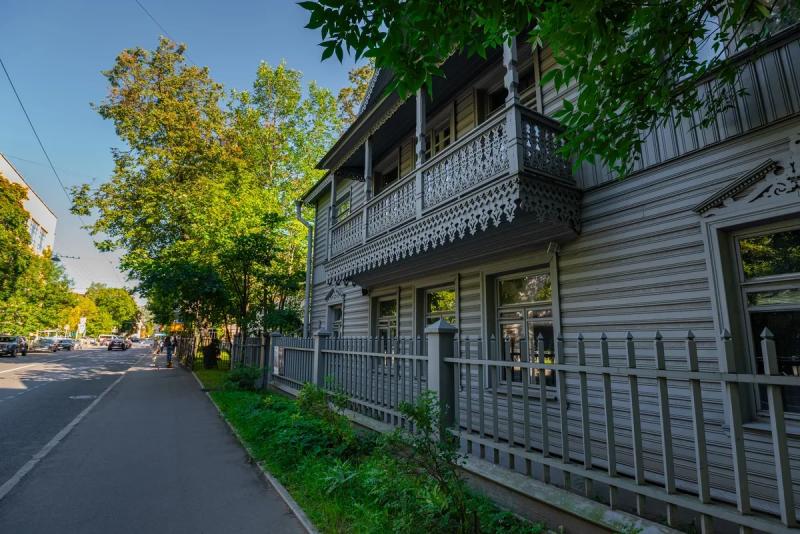
Museum of the Russian Avant-garde in St. Petersburg. Photo: Visit Petersburg
Malevich, Mayakovsky, Tatlin, Khlebnikov and many others often visited here. This is a monument in every sense. Both as an example of St. Petersburg architecture – a unique wooden house with an authentic layout – and as a museum. The exhibition includes paintings, sculptures, graphics and other art forms presented in an interesting and unusual manner.
ALEXANDRIA PARK IN PETERHOF
Peterhof is not only fountains, which everyone knows about. Its highlight is Alexandria Park near the Grand Peterhof Palace.
In the middle of the XVIII century, the fascination with the Middle Ages, associated with the beginning of the romantic movement in England, quickly spread around the world and gave birth to a new style – Neo-Gothic.
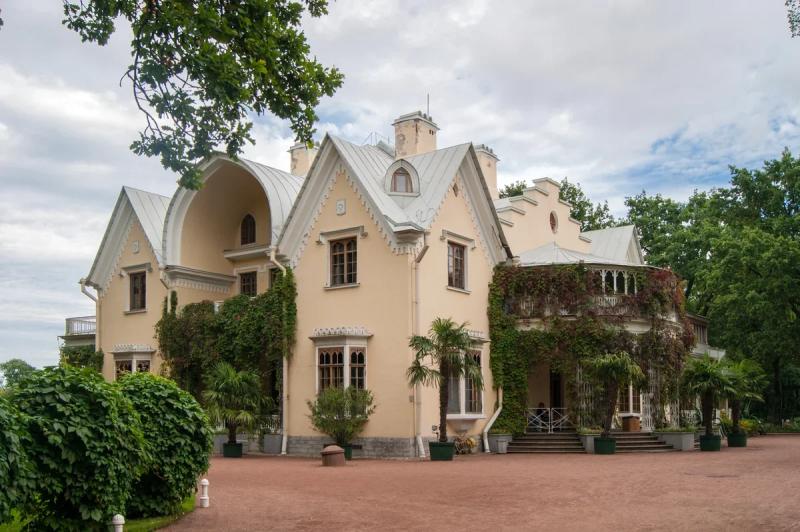
Alexandria Park in Peterhof, the Cottage Palace. Photo: Dmitry Chemerik, Wikimedia Commons, Creative Commons Share Alike 4.0 license
The cottage, the main building of the Alexandria Park, where the family of Emperor Nicholas I spent part of the summer, is made in this style. Inside there are very unusual interiors, in which beautiful photographs are obtained.
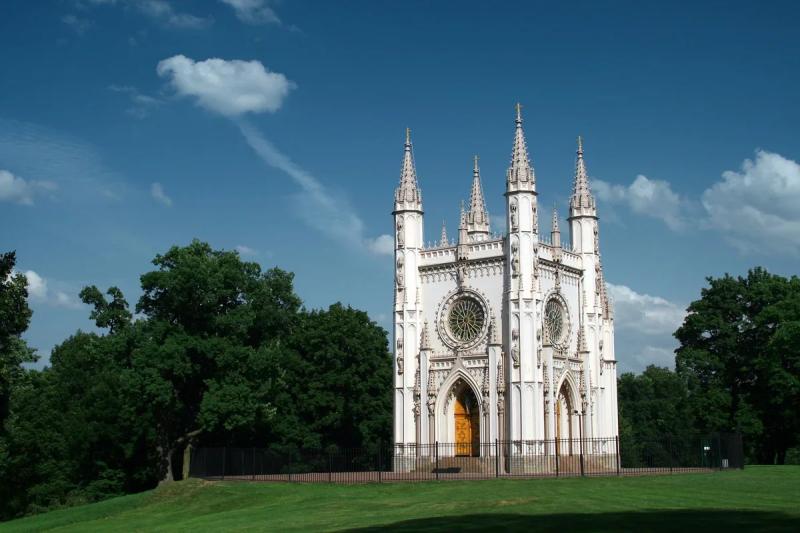
Peterhof, Alexandria Park. This Gothic chapel is actually the church of the Holy Prince Alexandr_nevsky. Photo: Wikimedia Commons
Recall that the official tourist portal Visit Petersburg, which provides up-to-date information about the life of the city, points of attraction, events and routes, will always help guests of the Northern capital to navigate the wealth of offers on a daily basis.
Elena Myagkova

